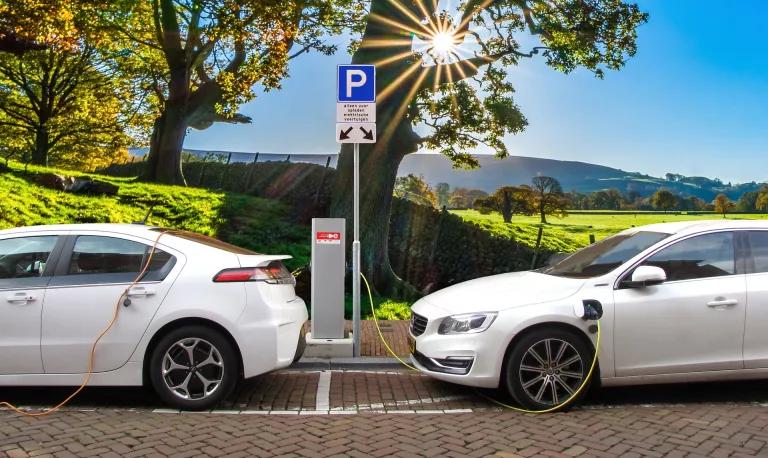IPCC 1.5°C Report: Don’t Despair There’s a Solutions Chapter

The Intergovernmental Panel on Climate Change (IPCC) Special Report on limiting warming to 1.5°C (2.7°F) has laid out the dangerous global impacts if we don’t take rapid and transformative action to address climate change: Seas will rise and warm, killing most tropical coral reefs and flooding coastal communities. Hundreds of millions more people will be exposed to climate risks, increased extreme heat events, and flooding events
The most important takeaway is that we can still avoid the worst impacts. We have most of the technologies and tools we need. What we lack, in most key countries, are the political incentives and public pressure to act as fast as needed.
Last week, I summarized the Special Report’s discussion of potential pathways for limiting warming to 1.5°C and transforming our energy system to phase out most fossil fuel use and emit far less carbon. This post provides a more detailed summary of the options mentioned in the IPCC report for reducing climate-changing pollution, along with real-world examples of the types of actions we need to dramatically scale up, and links to what NRDC is already doing to help implement many of the solutions.
Energy System Transitions
Wind energy (on-shore and off-shore)
The political, economic, social and technical feasibility of solar energy, wind energy and electricity storage technologies has improved dramatically over the past few years...solar energy and both onshore and offshore wind energy have had dramatic growth trajectories.
For example, wind energy delivered power equivalent to 43.6 percent of Denmark’s total electricity consumption in 2017. The world has already installed over 539GW of wind power globally, equivalent to about half of total US electricity generation capacity from all sources.
Several countries have adopted targets of 100% renewable electricity… as this meets multiple social, economic and environmental goals and contribute to mitigation of climate change.
Solar PV
Solar Photovoltaics (PV) with batteries have been cost effective in many rural and developing areas…, for example 19 million people in Bangladesh now have solar-battery electricity in remote villages.

China has installed 130GW of solar PV—more than the total generating capacity of California and the Pacific Northwest combined, from all energy sources. India’s renewable energy target for 2022 is 175GW. That’s quadruple the generating capacity of New York state, from all energy sources.
Electricity Storage
Grid-connected battery storage grew between 2015 to 2016 by 50% … This appears to be the result of significant cost reductions due to mass production for Electric Vehicles (EVs).
In Australia, Tesla’s 100MW lithium-ion battery is paired with a nearby wind farm, and is expected to recoup one-third of total project costs within just the first year of operation.
Transportation and Urban System Transitions
Some urban systems have begun decoupling development from the consumption of fossil fuel powered energy through energy efficiency, renewable energy and locally managed smart-grids…Scenarios consistent with 1.5°C pathways, depend on an almost 40% reduction in final energy use by the transport sector by 2050.
Electric cars and buses

High growth rates are now appearing in electric vehicles… electric bikes and electric transit… which would need to displace fossil-fuel powered passenger vehicles by 2035–2050 to remain in line with 1.5°C-consistent pathways.
In one analysis the phasing out of fossil fuel passenger vehicle sales by 2035-2050 was identified as a benchmark for aligning with 1.5°C-consistent pathways.
More than one million electric vehicles were sold worldwide in 2017, and BNEF forecasts this will surge to 30 million by 2030. But policies to support EV adoption are needed to accelerate the uptake of EV globally in line with a 1.5°C pathway.
Low/Zero-energy Buildings
Buildings are responsible for 32% of global energy consumption… and have a large energy saving potential with available and demonstrated technologies such as energy efficiency improvements in technical installations and in thermal insulation… and energy sufficiency.
California recently updated its building energy code to require that all new single-family homes and low-rise apartments combine rooftop solar panels with enough energy efficiency measures like insulation and better windows to ensure that the buildings will use net-zero electricity annually.
Land and Ecosystem Transitions
Biomass stocks in tropical, subtropical, temperate and boreal biomes currently hold 1085, 194, 176, 190 Gt CO2, respectively. Conservation and restoration can enhance these natural carbon sinks.
Afforestation and reforestation

Reducing emissions from land use, and land use change are…an important component of low-emissions mitigation pathways. Afforestation and reforestation may be associated with significant co-benefits if implemented appropriately.
Growing or regrowing forests is the most cost-effective means of removing carbon, and IPCC scenarios include afforestation as an important component of pathways to 1.5°C.
Reduced Food Wastage and Efficient Food Production

Around one-third of the food produced on the planet is not consumed… Food wastage is a combination of food loss–decrease in mass and nutritional value of food due to poor infrastructure, logistics, and lack of storage technologies and management—and food waste that derives from inappropriate human consumption that leads to food spoilage associated with inferior quality or overproduction.
Improving the efficiency of food production and closing yield gaps have the potential to reduce emissions from agriculture, reduce pressure on land and enhance food security and future mitigation potential.
Campaigns to raise awareness about food waste have helped to drive behavior change and reduce food waste.
Dietary Shifts

Decreasing food loss and waste and behavioural change around diets could lead to effective mitigation and adaptation options by reducing both emissions and pressure on land, with significant co-benefits for food security, human health and sustainable development.
Between 2005 and 2014, Americans indirectly cut the emissions associated with our diets by approximately 10 percent through changes in behavior, mostly through reduced beef consumption. The savings in terms of emissions is roughly equivalent to the annual emissions of 57 million gasoline-powered cars, a huge reduction.
Next Steps
To get to the transformations we need at a global scale, a range of policy instruments are suggested by the IPCC “to reduce the demand for carbon-intensive services and shift market preferences away from fossil fuel-based technology.” This includes a reduction in fossil fuel subsidies, innovative price and non-price policy instruments such as carbon pricing, and de-risking financial instruments to help transition us to better, cleaner technologies.
There is no one, magic solution to the climate crisis. Out of all the tools we have, it’s the ones we’re already seeing deployed around the world that should give us reason for hope. Many of the barriers to these are not technological, but institutional or economic—and something which public pressure and policy incentives can help fix. That’s why NRDC has worked in the United States and globally to help speed the transition to a cleaner electricity system, improve energy efficiency, limit fossil fuel production and consumption, increase the deployment of electric vehicles, protect the forests that help store carbon, and reduce food waste and associated emissions. We’ve also worked hard to make sure everyone knows the individual actions that can be taken to tackle climate change.
We have the right technologies and strategies needed to transform the global economy, we just need to speed up their deployment starting now.


